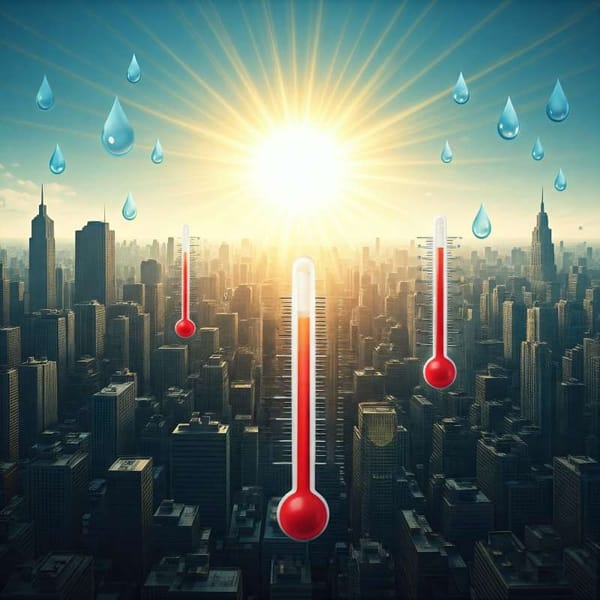Light pollution: When the light consumed the night
Although lighting is necessary at night for safety reasons, there is a point that once exceeded makes the excess light problematic. Discover why so.

Star-filled nights have served for generations as a source of inspiration. From songs and paintings to great scientific and technological discoveries. Unfortunately, our generation may be the last to have access to this natural wonder that is the starry sky.
The cause of this loss is the excess of artificial lighting known as light pollution. Although lighting is necessary at night for safety reasons, there is a point that once exceeded makes the excess light problematic.
In June 2016 the study "A New World Atlas of Sky Brightness by Artificial Light" was published by an international and interdisciplinary group led by Italian astronomer Fabio Falchi. The study indicates that one in three people in the world can no longer see the Milky Way due to light pollution, although in North America that figure reaches four out of five.
Initially, this type of pollution only affected astronomers and their research, but today its effects reach the consumption of energy, ecological balance, and human health. But how did we get to this point, and what are its effects?
Recently, the technological revolution of LED (Light Emitting Diode) became accessible enough for cities to migrate their street lighting from traditional sodium vapor to new LED lights. In addition to being more energy-efficient, the white light of LEDs gives a more faithful color response which translates into greater public safety.
However, even in white light, there are important differences. Our eyes perceive daylight as neutral white. If the white light has a tint towards blue, it is called "cool white" or cold light, and if it tends towards red it is a "warm white" or warm light.
The point in favor of a cold light LED is that it gives more illumination per unit of power, which can reduce consumption considerably if you take into account that a city may have tens of thousands of lights in operation.
On the contrary, it is the way living beings respond to cold light. Over millions of years, life on our planet has evolved to respond to the natural cycles of day and night. Light with a blue component breaks this cycle by affecting migratory routes and reproductive cycles in different animal species. Humans are also affected as blue light disrupts the pattern of sleep and rest by interrupting the production of the hormone melatonin.
Therefore, the American Medical Association (AMA) also published a report in June 2016 warning that this type of lighting increases the risk of cancer, diabetes, and cardiovascular disease. Moreover, the human eye has greater sensitivity in the green area so that this extra blue light is not even used efficiently by our eyes, which denies the point of view that was in favor of this lighting.
The relationship between the increase of light with a blue component and light pollution is worrisome since blue light can travel hundreds of kilometers due to atmospheric dispersion illuminating the once dark sky in remote areas. A new finding from Falchi's study is that this connection was previously underestimated because the satellites used to measure city brightness did not have adequate sensitivity in this color band. The new results show that luminaires with this blue tint can increase light pollution by up to two and a half times compared to those cities using warm light.
Falchi's study then becomes a warning about the consequences of this trend in lighting that can no longer be ignored. Especially if cities like Davis in California and New York itself, have had to change their street lighting renovations from cold light to warm light at a great economic cost due to complaints from residents themselves about finding this lighting uncomfortable. This is because blue light increases the perception of glare, with the most sensitive people being visually impaired and the elderly.
To prevent light pollution the most direct measure is through legislation to indicate what type of lights can be used in areas near astronomical observatories, without neglecting the aspect of public safety. Examples of these legislations can be found in Hawaii, Chile, and Spain, which have large international observatories.
In Mexico, the state of Baja California is the only one in the country that currently has this type of regulation, since the National Astronomical Observatory (OAN), operated by the UNAM's Astronomy Institute, is located in the Sierra de San Pedro Mártir. San Pedro Mártir is considered among the four best sites in the world for astronomical observation but unlike the other sites, the OAN is just entering the era of international cooperation and investment to build large telescopes.
A necessary condition for this to happen is to be able to effectively protect its dark sky from light pollution by using only lights with warm light and no emission above the horizon. For this reason, work is underway to update the regulations in Baja California and also bring them to the federal level with a bill already presented in the House of Representatives.
Taking into account the above information, light pollution has already become a global problem to such an extent that UNESCO is taking action, the main one being to include recommendations on how to prevent it in its next Habitat Agenda 2030. This guide will serve to have self-sustaining and environmentally friendly cities, which in turn will be able to access certain resources and support.
Perhaps the greatest difficulty in addressing this problem is that with more and more people who have never appreciated the wonder of a starry sky, they simply cannot miss what they have never had. It is today that we have the opportunity to rescue for future generations the spectacle that for thousands of years we have appreciated as a species, which has driven cultural, scientific, and technological development, and has been a faithful companion to the history of our civilization. By preserving the skies full of stars, we will also preserve a fundamental part of what has made us human.
By Fernando Avila Castro. Office of the Law of the Sky. National Astronomical Observatory. Institute of Astronomy of the UNAM, Ensenada. International Dark-Sky Association. Source: https://www.nochedelasestrellas.org.mx/




